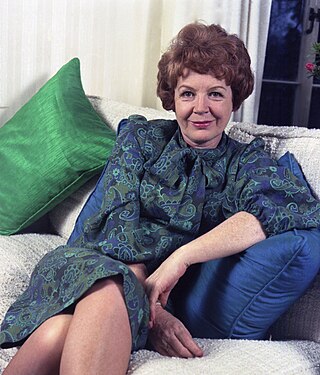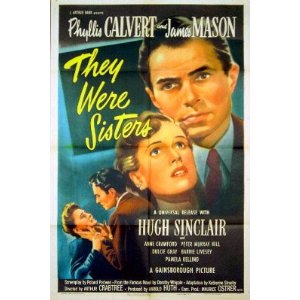
James Neville Mason was an English actor. He achieved considerable success in British cinema before becoming a star in Hollywood. He was the top box-office attraction in the UK in 1944 and 1945; his British films included The Seventh Veil (1945) and The Wicked Lady (1945). He starred in Odd Man Out (1947), the first recipient of the BAFTA Award for Best British Film.

Stewart Granger was a British film actor, mainly associated with heroic and romantic leading roles. He was a popular leading man from the 1940s to the early 1960s, rising to fame through his appearances in the Gainsborough melodramas.

Margaret Mary Day Lockwood, CBE, was an English actress. One of Britain's most popular film stars of the 1930s and 1940s, her film appearances included The Lady Vanishes (1938), Night Train to Munich (1940), The Man in Grey (1943), and The Wicked Lady (1945). She was nominated for the BAFTA Award for Best British Actress for the 1955 film Cast a Dark Shadow. She also starred in the television series Justice (1971–74).

The Wicked Lady is a 1945 British costume drama film directed by Leslie Arliss and starring Margaret Lockwood in the title role as a nobleman's wife who becomes a highwaywoman for the excitement. The film had one of the largest audiences for a film of its period, 18.4 million.

Phyllis Hannah Murray-Hill, known professionally as Phyllis Calvert, was an English film, stage and television actress. She was one of the leading stars of the Gainsborough melodramas of the 1940s such as The Man in Grey (1943) and was one of the most popular movie stars in Britain in the 1940s. She continued her acting career for another 50 years.

Jean Kent, born Joan Mildred Field was an English film and television actress.
Arthur Crabtree was a British cinematographer and film director. He directed films with comedians such as Will Hay, the Crazy Gang and Arthur Askey and several of the Gainsborough Melodramas.
Leslie Arliss was an English screenwriter and director. He is best known for his work on the Gainsborough melodramas directing films such as The Man in Grey and The Wicked Lady during the 1940s.

Madonna of the Seven Moons is a 1945 British drama film starring Phyllis Calvert, Stewart Granger and Patricia Roc. Directed by Arthur Crabtree for Gainsborough Pictures, the film was produced by Rubeigh James Minney, with cinematography from Jack Cox and screenplay by Roland Pertwee. It was one of the Gainsborough melodramas of the mid-1940s popular with WW2-era female audiences.

Fanny by Gaslight is a 1944 British drama film, directed by Anthony Asquith and produced by Gainsborough Pictures, set in the 1870s and adapted from a 1940 novel by Michael Sadleir.
Edward Black was a British film producer, best known for being head of production at Gainsborough Studios in the late 1930s and early 1940s, during which time he oversaw production of the Gainsborough melodramas. He also produced such classic films as The Lady Vanishes (1938). Black has been called "one of the unsung heroes of the British film industry" and "one of the greatest figures in British film history, the maker of stars like Margaret Lockwood, James Mason, John Mills and Stewart Granger. He was also one of the very few producers whose films, over a considerable period, made money." In 1946 Mason called Black "the one good production executive" that J. Arthur Rank had. Frank Launder called Black "a great showman and yet he had a great feeling for scripts and spent more time on them than anyone I have ever known. His experimental films used to come off as successful as his others."

Patricia Roc was an English film actress, popular in the Gainsborough melodramas such as Madonna of the Seven Moons (1945) and The Wicked Lady (1945), though she only made one film in Hollywood, Canyon Passage (1946). She also appeared in Millions Like Us (1943), Jassy (1945), The Brothers (1947) and When the Bough Breaks (1947).

Caravan is a 1946 British black-and-white drama film directed by Arthur Crabtree. It was one of the Gainsborough melodramas and is based on the 1942 novel Caravan by Eleanor Smith.
The Gainsborough melodramas were a sequence of films produced by the British film studio Gainsborough Pictures between 1943 and 1947 which conformed to a melodramatic style. The melodramas were not a film series but an unrelated sequence of films which had similar themes that were usually developed by the same film crew and frequently recurring actors who played similar characters in each. They were mostly based on popular books by female novelists and they encompassed costume dramas, such as The Man in Grey (1943) and The Wicked Lady (1945), and modern-dress dramas, such as Love Story (1944) and They Were Sisters (1945). The popularity of the films with audiences peaked mid-1940s when cinema audiences consisted primarily of women. The influence of the films led to other British producers releasing similarly themed works, such as The Seventh Veil (1945), Pink String and Sealing Wax (1945), Hungry Hill (1947), The White Unicorn (1947), Idol of Paris (1948), and The Reluctant Widow (1950) and often with the talent that made Gainsborough melodramas successful.

Love Story is a 1944 British black-and-white romance film directed by Leslie Arliss and starring Margaret Lockwood, Stewart Granger, and Patricia Roc. Based on a short story by J. W. Drawbell, the film is about a concert pianist who, after learning that she is dying of heart failure, decides to spend her last days in Cornwall. While there, she meets a former RAF pilot who is going blind, and soon a romantic attraction forms. Released in the United States as A Lady Surrenders, this wartime melodrama produced by Gainsborough Pictures was filmed on location at the Minack Theatre in Porthcurno in Cornwall, England.

The Magic Bow is a 1946 British musical film based on the life and loves of the Italian violinist and composer Niccolò Paganini. It was directed by Bernard Knowles. The film was entered into the 1946 Cannes Film Festival.

The Man in Grey was a novel by the British writer Lady Eleanor Smith first published in 1941. It was a melodrama set in Regency Britain. A young woman unhappily married to a cold aristocrat falls in love with a strolling actor, but her hopes of eloping to happiness are wrecked by an old school friend who murders her in order to be able to marry her husband.

Harold Huth was a British actor, film director and producer.

They Were Sisters is a 1945 British melodrama film directed by Arthur Crabtree for Gainsborough Pictures and starring James Mason and Phyllis Calvert. The film was produced by Harold Huth, with cinematography from Jack Cox and screenplay by Roland Pertwee. They Were Sisters is noted for its frank, unsparing depiction of marital abuse at a time when the subject was rarely discussed openly. It was one of the Gainsborough melodramas.

Doctor Syn is a 1937 British black-and-white historical dramatic adventure film, directed by Roy William Neill for Gainsborough Pictures. It stars George Arliss, Margaret Lockwood, Graham Moffatt, and Ronald Shiner. The film is based on the Doctor Syn novels of Russell Thorndike, set in 18th century Kent. The character of Syn and the events at the film's climax were both softened considerably in comparison to Thorndike's original storyline.
















